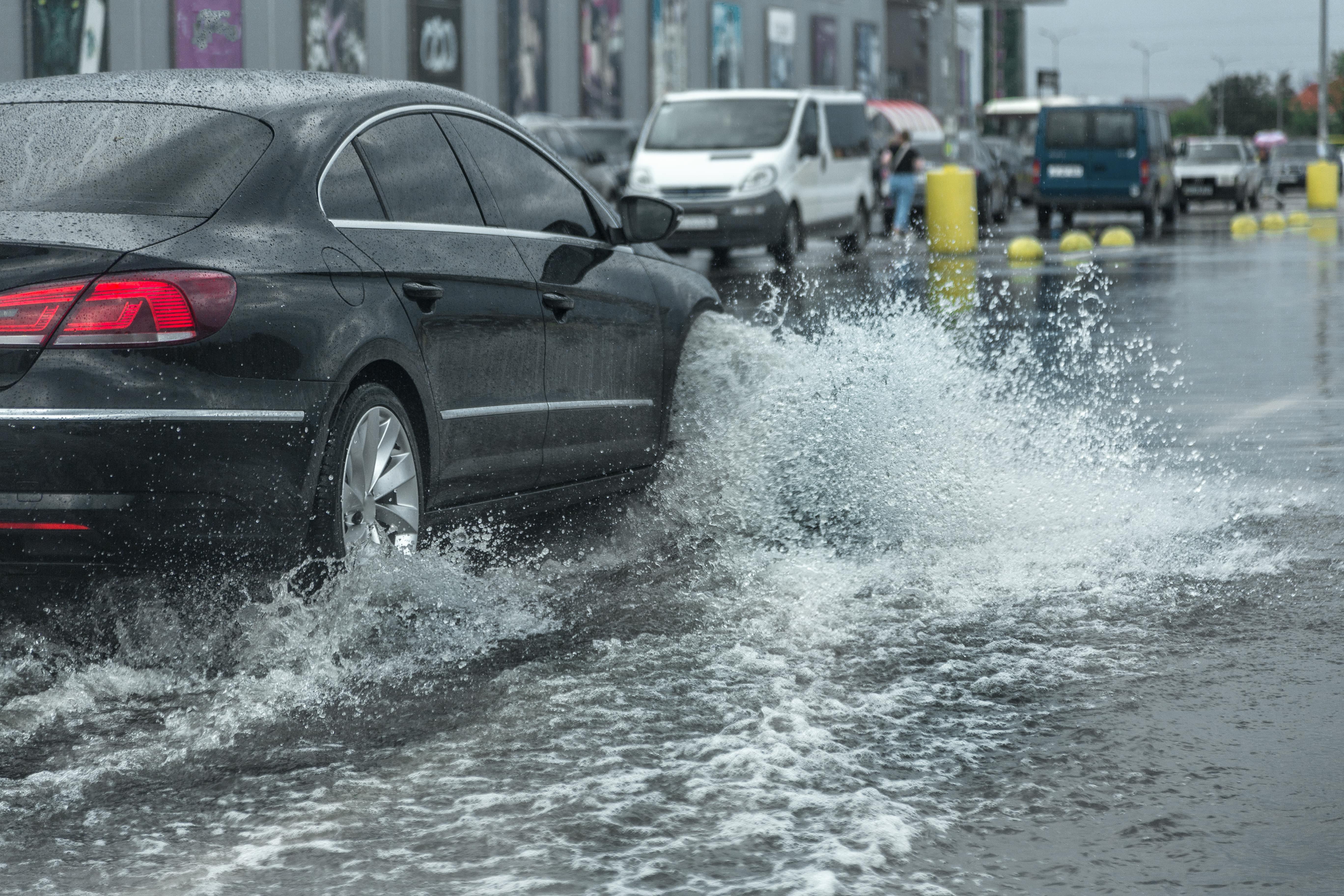Guide To Navigating Flooded Routes
The United Kingdom has an international reputation of horrible weather conditions, whether that be sub-zero freezing conditions, torrential rain, or the occasional bout of snow, which has the ability to bring the whole country to a stop.
These spells of extreme weather are often seasonal, and only majorly affect people in certain regions of the country (usually) – so this article may be much more appropriate for those of you in the hills of Somerset rather than the streets of London.
If you are lucky enough to live in an idyllic country setting, you will understand the unfortunate side effects the weather causes, and the turmoil that follows – especially concerning flooding. Residents often frantically barricade themselves indoors, finding themselves switching their cars for small aquatic vessels.
Unfortunately, only a small proportion of people in the UK actually own boats – the rest of us become stranded and left to battle these newly formed waterways in the safety of our cars, with hopeful optimism that we do not completely disappear into the murky depths.
Whether this relates exactly or not to you, it is essential that you understand how to deal with a flood, so you can successfully come out of the other side unscathed.
Should you drive through a flooded road?
Travelling around a corner and meeting a large body of water is an ominous sight, whether you are a newly qualified driver or a veteran motorist. People are often left scratching their heads, with little or no idea of what to do in the scenario – What did they teach me in my theory test?
The majority of people are highly unlikely to remember the exact manoeuvres, correct gears, and whether to attempt the crossing and come out the other side without a scratch.
If you can remember, we commend you! But for the rest of us mere mortals, we would need to scan the internet (which is why some of you may be here).
The best advice we can first give you is to assess whether you actually need to drive through the flood and whether it is actually viable to do so; try to find alternative routes if possible. Pull over to the side of the road and consult either your pocket map or your phone to check for alternative routes that may have not suffered a similar fate.
This will keep your car much healthier, and avoid any excessive towing expenses you may incur because of reckless intentions, or an impulse to floor it through the flood.
What should I do if there are no other routes available?
If you have explored all alternatives options available, or find yourself in an unfamiliar country road with no internet connection, you may have to face the daunting task of navigating through the flooded road (But, only if you can assess its safety).
But please keep an eye out for advice from the highways agency or emergency services – if there is a sign saying a road is closed – then follow this advice and turn around where possible. Do not ignore any official closure notices.
How do I know how deep the water is?
Unless armed with an Ultrasonic device, a tape measure, or your scuba diving gear – it will often be extremely hard to accurately determine the height of the water.
Of course, if you frequently visit this particular stretch of road, you can usually make a pretty accurate guess. But what steps should you take if you have never come across the piece of road before?
Look around. See whether there are any indicators of the water depth, in relation to the landscape.
For instance, if you can only see the top of a road sign, then we would probably suggest staying clear.
As soon as you can establish that your vehicle will not be fully submerged, you can proceed with (extreme) caution. The AA strongly suggests avoiding water that is either more than 10cm deep and/or has a current.
What should I do next? Our expert tips for driving on water.
We have saved these tips for a rainy day (Excuse the pun):
- Drive slowly – While it may look fun to create your own tsunami-effect, excessively speeding through water can often push water straight back into the engine and cause major damage.
- Choose a low gear – Keep revs to a minimum, suppress your inner boy/ girl-racer impulses and choose a low gear.
- Close all your windows – You will soon start feeling a pool of water in your lap if you perform this faux pas. Shut all windows for your own sake.
- Test your brakes – Water on brake pads will stop them working effectively, so once clear of the flood, put your foot on the brakes to create friction and evaporate the liquid.
- Give way to oncoming vehicles – Useful for determining the depth of the water, and saves getting splashes by a bow wave.
- Do not stop – Golden rule of driving through a flood. Stopping at any point can cause water to enter the exhaust pipe, and have devastating effects.
But, if you cannot be certain about the depth of the flood, whether it has a current or alternative routes you can take, then we would strongly suggest avoiding the hazard completely – take the dry, and potentially much cheaper option of turning back and working/ studying from the comfort of your home instead.
